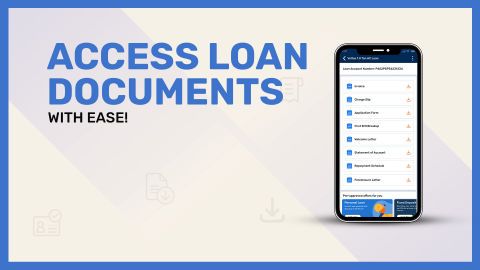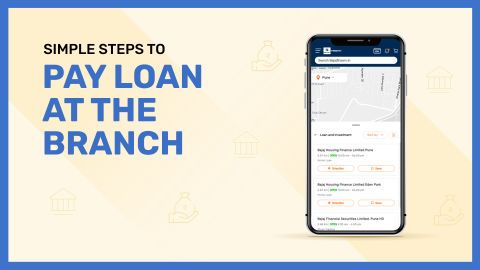Understanding loan settlement: A complete guide
Loan settlement is a process that allows borrowers to close their outstanding loan accounts by negotiating with lenders for a reduced payoff amount. It is typically an option for individuals facing financial distress who are unable to repay the full loan. While settlement can offer relief, it also impacts credit scores and future borrowing opportunities.
If you’re dealing with a gold loan and need to transfer ownership to another person, the process involves multiple steps to ensure a smooth transition. The new borrower must meet the lender’s eligibility criteria, provide necessary documents, and go through the approval process. The lender verifies all details before revising the loan agreement for final signing. Understanding these steps ensures a hassle-free transfer while avoiding potential financial or legal complications.
In this guide, we’ll walk you through the key steps to transferring a gold loan account ownership, ensuring clarity and compliance with lender requirements.
Steps to transfer gold loan account ownership
Transferring a gold loan account ownership requires following a structured process to ensure compliance with the lender’s policies. Below are the essential steps to successfully complete the transfer:
1. Submit a request to the lender
The current borrower must submit a formal request to the lender to transfer the gold loan ownership.
The request can be made through the bank’s branch, customer service, or online portals (if applicable).
Lenders may require a written application or a standard form to process the request.
The new borrower should be eligible as per the lender’s loan transfer criteria.
Some financial institutions may not allow ownership transfer, so it’s important to confirm the policy before proceeding.
2. Provide necessary documents
Both the existing and new borrower must submit identity and financial documents.
Common documents required include:
Identity proof (Aadhaar Card, PAN Card, Passport, or Voter ID).
Address proof (Utility bills, Rental Agreement, or Passport).
Income proof (Salary slips, Bank statements, or ITR for self-employed individuals).
Original loan agreement and gold loan account details.
NOC (No Objection Certificate) from the current borrower permitting the transfer.
A written acceptance letter from the new borrower agreeing to take over the loan.
The lender may request additional documents based on their verification process.
3. Lender’s verification and approval process
Once the documents are submitted, the lender conducts a thorough verification process.
The bank assesses the creditworthiness of the new borrower, including:
Credit score evaluation.
Repayment history and existing loans.
Financial stability and income source.
The lender may also verify the pledged gold’s value and ensure it meets the required loan amount.
If the new borrower meets the eligibility criteria, the lender provides approval for the ownership transfer.
4. Signing the revised loan agreement
After approval, both parties must sign a revised loan agreement with updated ownership details.
The agreement outlines the loan repayment terms, interest rates, and borrower responsibilities.
The lender officially transfers the gold loan account to the new borrower.
The new borrower becomes solely responsible for repaying the outstanding loan amount.
Any remaining formalities, such as updating records in the bank’s system, are completed.
By following these steps, borrowers can successfully transfer gold loan ownership while ensuring compliance with lender requirements.
Documents required for gold loan ownership transfer
When transferring the ownership of a gold loan, both the existing and new borrowers must provide specific documents to the lender. Below is a table outlining the required documents:
| Document Type | Required Documents |
| Identity Proof | Aadhaar Card, PAN Card, Passport, Voter ID |
| Address Proof | Utility Bill, Rental Agreement, Passport, Driving License |
| Income Proof | Salary Slips (Last 3 months), Bank Statements, Income Tax Returns (ITR) |
| Existing Loan Documents | Original Loan Agreement, Loan Account Statement |
| Consent Documents | NOC (No Objection Certificate) from the current borrower |
| New Borrower’s Acceptance | A signed agreement from the new borrower accepting the loan responsibility |
| Lender-Specific Documents | Any additional forms as required by the bank or NBFC |
Lenders may request additional documents based on their internal policies. Ensuring all documents are submitted correctly can speed up the transfer process.
Processing time & Charges for gold loan ownership transfer
The processing time for transferring a gold loan ownership varies across lenders. On average, it takes 5 to 10 working days, depending on the verification process and documentation completeness. Some banks may expedite the process if the new borrower has a strong credit profile.
Factors affecting processing time:
Completeness and accuracy of submitted documents.
Creditworthiness and financial stability of the new borrower.
Internal verification procedures of the lender.
Charges involved:
Lenders usually charge a loan transfer processing fee ranging from ₹500 to ₹3,000, depending on the bank's policies. Additional charges may include:
Stamp duty charges (if applicable, based on state laws).
Legal fees for agreement revision.
GST on processing fees (as per applicable rates).
Borrowers should check with their lender for the exact charges before proceeding with the transfer.
Alternative solutions if ownership transfer is not allowed
If your lender does not allow a gold loan ownership transfer, there are alternative solutions to manage the loan effectively:
1. Prepayment or foreclosure
The existing borrower can choose to prepay the outstanding loan amount before the tenure ends. Many lenders allow foreclosure with minimal or no charges, making it a viable option to clear the loan early.
2. Loan refinancing
The new borrower can apply for a fresh gold loan with the same or a different lender and use the sanctioned amount to close the existing loan. This process allows indirect ownership transfer without violating lender policies.
3. Joint loan agreement
If the lender permits, the new borrower can be added as a co-borrower, sharing the repayment responsibility. This ensures a smooth transition while keeping the original loan active.
4. Balance transfer to a new lender
Some financial institutions offer gold loan balance transfer services. The new borrower can apply with a lender that allows ownership transfer and shift the loan accordingly.
For efficient loan management, explore the Bajaj Finserv Gold Loan Service. Also, if you face double EMI deductions, refer to this Double EMI Deduct for Gold Loan guide.
Conclusion
Transferring gold loan ownership involves a structured process, including lender approval, document submission, and agreement revision. If the transfer is not permitted, alternatives like prepayment, refinancing, or a joint loan agreement can help manage the loan efficiently. Understanding the lender’s policies and associated charges is crucial to avoid complications. Ensuring all documents are in order can speed up the process, making it smoother for both parties. For hassle-free gold loan management, explore the Bajaj Finserv Gold Loan Service. Always evaluate your options carefully before proceeding with ownership transfer or alternative solutions.
Loan support made easy—read on — H2




